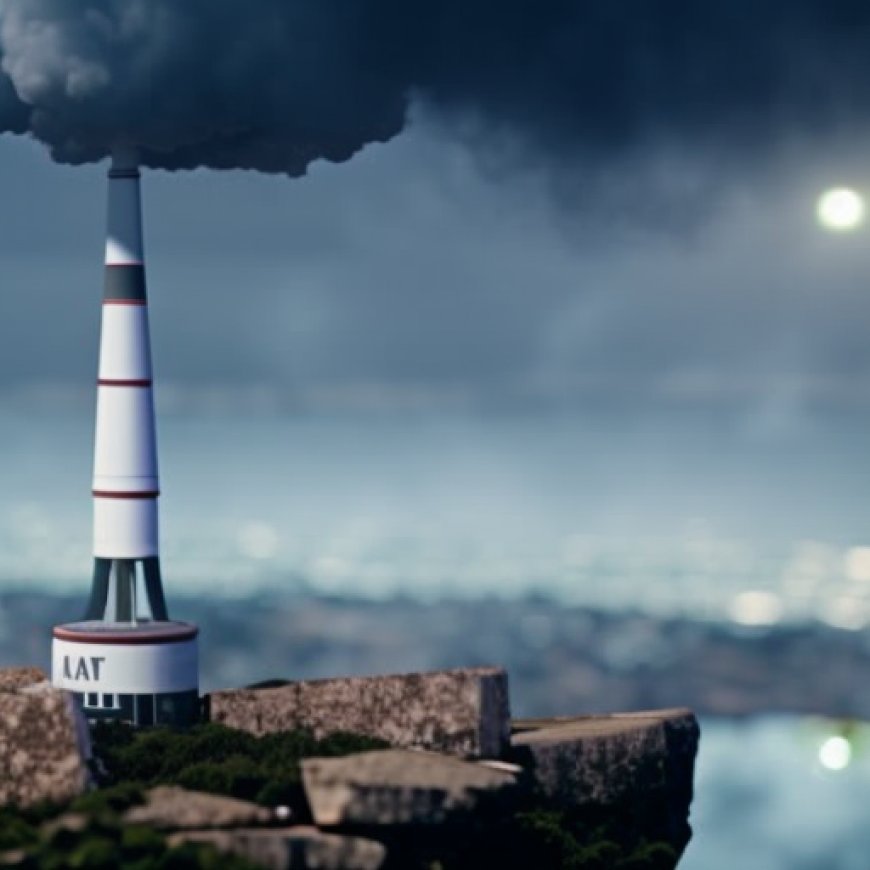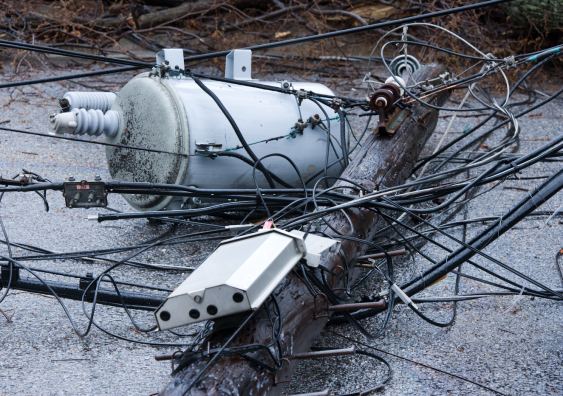Renewable backup power key to energy resilience in disasters: report
Renewable backup power key to energy resilience in disasters: report UNSW Newsroom


Remote Communities Can Improve Resilience to Power Outages with Renewable Energy Technologies
Remote communities in disaster-prone areas could become more resilient to power outages by adopting more renewable energy technologies. That’s the main finding of a UNSW Sydney report, which recommends more policy support for the uptake of Distributed Energy Resources (DER) like solar PV and batteries to help households manage disruptions to the electricity grid caused by bushfires and other extreme weather events.
Insights from the Report
The report by researchers from the Collaboration on Energy and Environmental Markets (CEEM) draws on interviews, workshops, and case studies to provide insights into how power outages impact households and communities. It was funded by the New South Wales Reconstruction Authority’s Bushfire Community Resilience and Recovery Fund (BCRRF) in the wake of the Black Summer bushfires to explore options for energy resilience – the ability to meet the energy demand when access to the main electricity supply is down.
The loss of power during bushfires and other extreme weather events has significant and wide-reaching consequences. Outages can be a great source of distress and vulnerability, leaving communities cut off from critical energy-dependent services and unable to meet basic needs.
Recommendations for Energy Resilience
“For many of these communities on the fringe of the network, there could be just a single line that connects them to the grid,” says Dr Mike Roberts, report author and Senior Research Fellow in the School of Photovoltaic and Renewable Energy Engineering, UNSW Engineering. “If the line goes down during a bushfire, it can leave them without electricity from the grid for quite some time.”

While operators need to make the electricity network more durable and adaptive to continue operating in extreme situations, not every outage will be avoidable. Individuals and communities must be prepared with alternatives for those scenarios, whether they be local energy sources such as rooftop solar, batteries or generators, or non-electrical energy sources such as gas BBQs.
“The resilience of energy systems is a matter of growing concern as we are set to face more frequent and intense fires and severe weather events because of climate change,” says Dr Sophie Adams, report author and Visiting Fellow in the School of Humanities and Languages at UNSW Arts, Design & Architecture. “Building energy resilience in bushfire-affected communities can be a matter of life or death, given the dependence on electricity for telecommunications, water, fuel, money, and refrigeration.”
Resilience Capacity of Renewable Energy
According to the report, the transition to renewable energy systems can help ensure communities can power essential activities when the grid is affected. Technologies such as solar PV and batteries can enable households and communities to generate, store and use energy locally when the grid is offline.
“The tendency to frame the value of renewable energy systems like solar PV in purely economic terms such as payback periods is quite narrow,” says Dr Adams. “We should take a more comprehensive view of DER’s value, to include not only bill savings and emissions reductions, but also resilience-building capacity.”
While many households already draw upon extensive backup resources during outages – including renewables – others are less equipped to manage the impacts on telecommunications, water, transport, and other services.
“There are many instances where community members help others to access energy services by sharing generators, portable phone chargers, eskies, or BBQs,” Dr Roberts says. “These forms of community response should be acknowledged and supported, but it’s not always feasible to depend on, and ideally, they could be more planned and less reactive with DER systems.”
Read more: Resilience in the face of disaster: new reports examine mental health and bushfires
The researchers say there is a need for more significant efforts to educate households, communities, and installers on the different types of DER available and their specific resilience implications. There’s also a need for more guidance around essential loads and temporarily reducing the demand for electricity during these periods.
“While there is broad awareness of their potential resilience benefits to cope with outages, these technologies can require appropriate design and deployment,” Dr Roberts says. “For example, only a correctly configured solar and battery system will be beneficial during a blackout – it won’t help if it’s not set up to still power your home when the grid goes down.”
Diversity of Distributed Energy Resources
Diversifying energy source access is also important – the researchers say other non-electrical energy sources can be used in conjunction with renewable DER to strengthen resilience and serve various backup functions, including generators, bottled gas, and microgrids.
“There is a continuum of DER configurations to strengthen energy resilience and meet the needs of different households and communities,” Dr Adams says. “It’s advisable to have options to fall back on where possible and not rely on a single backup solution.”
As the reliance on electricity is increasing with efforts to decarbonise, the report also highlights the need to consider the resilience impacts for bushfire-prone communities.
“Electrification of communications, transport, cooking and heating and more is necessary, but may have unintended resilience impacts,” Dr Adams says. “The need for backup electricity supply in these areas vulnerable to power outages needs to be included in the discussion of ongoing decarbonisation.”
The report recommends some forms of DER, like solar PV and batteries, have policies that support their adoption, including resilience-based subsidies.
“Ensuring these communities are DER-prepared and energy-resilient isn’t a cost-free exercise,” Dr Roberts says. “There does need to be more high-level policy support for communities like resilience-based grants to help them adopt necessary DER systems.”
SDGs, Targets, and Indicators
| SDGs | Targets | Indicators |
|---|---|---|
| SDG 7: Affordable and Clean Energy | 7.1 By 2030, ensure universal access to affordable, reliable and modern energy services | None mentioned in the article |
| SDG 11: Sustainable Cities and Communities | 11.5 By 2030, significantly reduce the number of deaths and the number of people affected and substantially decrease the direct economic losses relative to global gross domestic product caused by disasters, including water-related disasters, with a focus on protecting the poor and people in vulnerable situations | None mentioned in the article |
| SDG 13: Climate Action | 13.1 Strengthen resilience and adaptive capacity to climate-related hazards and natural disasters in all countries | None mentioned in the article |
| SDG 17: Partnerships for the Goals | 17.17 Encourage and promote effective public, public-private and civil society partnerships, building on the experience and resourcing strategies of partnerships | None mentioned in the article |
1. Which SDGs are addressed or connected to the issues highlighted in the article?
SDG 7: Affordable and Clean Energy
The article discusses the need for remote communities to adopt renewable energy technologies, such as solar PV and batteries, to enhance their resilience to power outages caused by bushfires and extreme weather events. This aligns with SDG 7, which aims to ensure universal access to affordable, reliable, and modern energy services.
SDG 11: Sustainable Cities and Communities
The article highlights the impact of power outages on communities, leaving them cut off from critical energy-dependent services and unable to meet basic needs. By promoting the adoption of renewable energy technologies and enhancing energy resilience, the article addresses SDG 11, which aims to make cities and human settlements inclusive, safe, resilient, and sustainable.
SDG 13: Climate Action
The article emphasizes the need to build energy resilience in bushfire-affected communities due to the increasing frequency and intensity of fires and severe weather events caused by climate change. This aligns with SDG 13, which focuses on taking urgent action to combat climate change and its impacts.
2. What specific targets under those SDGs can be identified based on the article’s content?
Target 7.1: By 2030, ensure universal access to affordable, reliable and modern energy services
The article highlights the need for remote communities to adopt renewable energy technologies, such as solar PV and batteries, to enhance their resilience to power outages. By ensuring access to affordable and reliable energy services, this target can be addressed.
Target 11.5: By 2030, significantly reduce the number of deaths and the number of people affected and substantially decrease the direct economic losses relative to global gross domestic product caused by disasters, including water-related disasters, with a focus on protecting the poor and people in vulnerable situations
The article emphasizes the impact of power outages on communities, leaving them cut off from critical energy-dependent services and unable to meet basic needs. By enhancing energy resilience and reducing the impacts of disasters, this target can be addressed.
3. Are there any indicators mentioned or implied in the article that can be used to measure progress towards the identified targets?
No, the article does not mention or imply any specific indicators that can be used to measure progress towards the identified targets.
SDGs, Targets, and Indicators
| SDGs | Targets | Indicators |
|---|---|---|
| SDG 7: Affordable and Clean Energy | 7.1 By 2030, ensure universal access to affordable, reliable and modern energy services | None mentioned in the article |
| SDG 11: Sustainable Cities and Communities | 11.5 By 2030, significantly reduce the number of deaths and the number of people affected and substantially decrease the direct economic losses relative to global gross domestic product caused by disasters, including water-related disasters, with a focus on protecting the poor and people in vulnerable situations | None mentioned in the article |
| SDG 13: Climate Action | 13.1 Strengthen resilience and adaptive capacity to climate-related hazards and natural disasters in all countries | None mentioned in the article |
| SDG 17: Partnerships for the Goals | 17.17 Encourage and promote effective public, public-private and civil society partnerships, building on the experience and resourcing strategies of partnerships | None mentioned in the article |
Behold! This splendid article springs forth from the wellspring of knowledge, shaped by a wondrous proprietary AI technology that delved into a vast ocean of data, illuminating the path towards the Sustainable Development Goals. Remember that all rights are reserved by SDG Investors LLC, empowering us to champion progress together.
Source: newsroom.unsw.edu.au

Join us, as fellow seekers of change, on a transformative journey at https://sdgtalks.ai/welcome, where you can become a member and actively contribute to shaping a brighter future.







